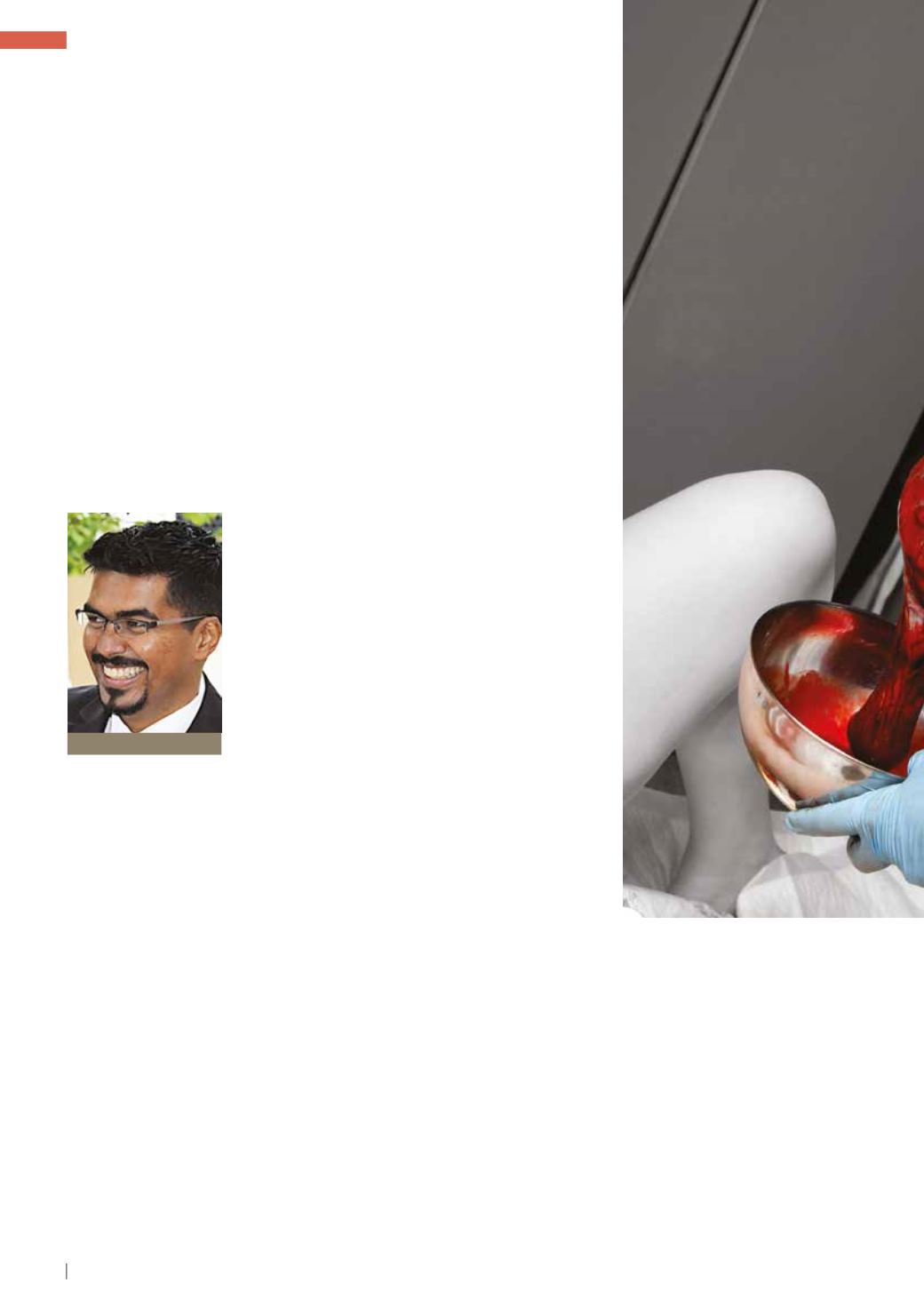

L
arry Hinkson, MD, of Charité
University Hospital, Berlin, Germany,
said, “The Royal College of
Obstetricians and Gynaecologists World
Congress in Cape Town provides the
ideal forum for us to present results and
set up networks in Africa to encourage
further study and implementation of the
technique.”
Dr Hinkson and colleagues set out to
assess the reduction in the need for
manual removal of the placenta with a
new "windmill technique” of placenta
delivery in patients with retained
placenta after vaginal delivery.
Secondary outcomes included
postpartum blood loss, postdelivery
haemoglobin changes, duration of
placenta delivery, intubation and general
anaesthesia, antibiotic prophylaxis, and
length of hospitalisation.
The windmill technique of placenta
delivery was developed at Charité
University Hospital for management
of retained placenta and involves the
application of continuous 360° umbilical
cord traction and rotation in such a
Dr Larry Hinkson
“Windmill” technique an
alternative to invasive,
operative, manual removal
of retained placenta
The windmill technique for delivery of the retained placenta
is a simple, safe, effective and easy to teach technique that
reduces invasive operative manual removal of the placenta,
reduces postpartum blood loss, reduces delay in the
placenta delivery and may reduce cost, results of a 3-year,
case-control study show.
manner as to be perpendicular to the
direction of the birth canal at the level
of the introitus.
This rotation through 360° is repeated
slowly and continuously with a
movement akin to the motion of the
blades of a windmill until the placenta
is safely delivered.
Patients with retained placenta more
than 30 minutes after vaginal delivery
at term and following failed traditional
interventions such as oxytocin infusion,
bladder emptying and controlled cord
"
Using the windmill technique for retained
placenta, 86% of patients avoided invasive
operative manual removal of the placenta.
LABOUR
PRACTICEUPDATE CONFERENCE SERIES •
RCOG World Congress 2017
6









